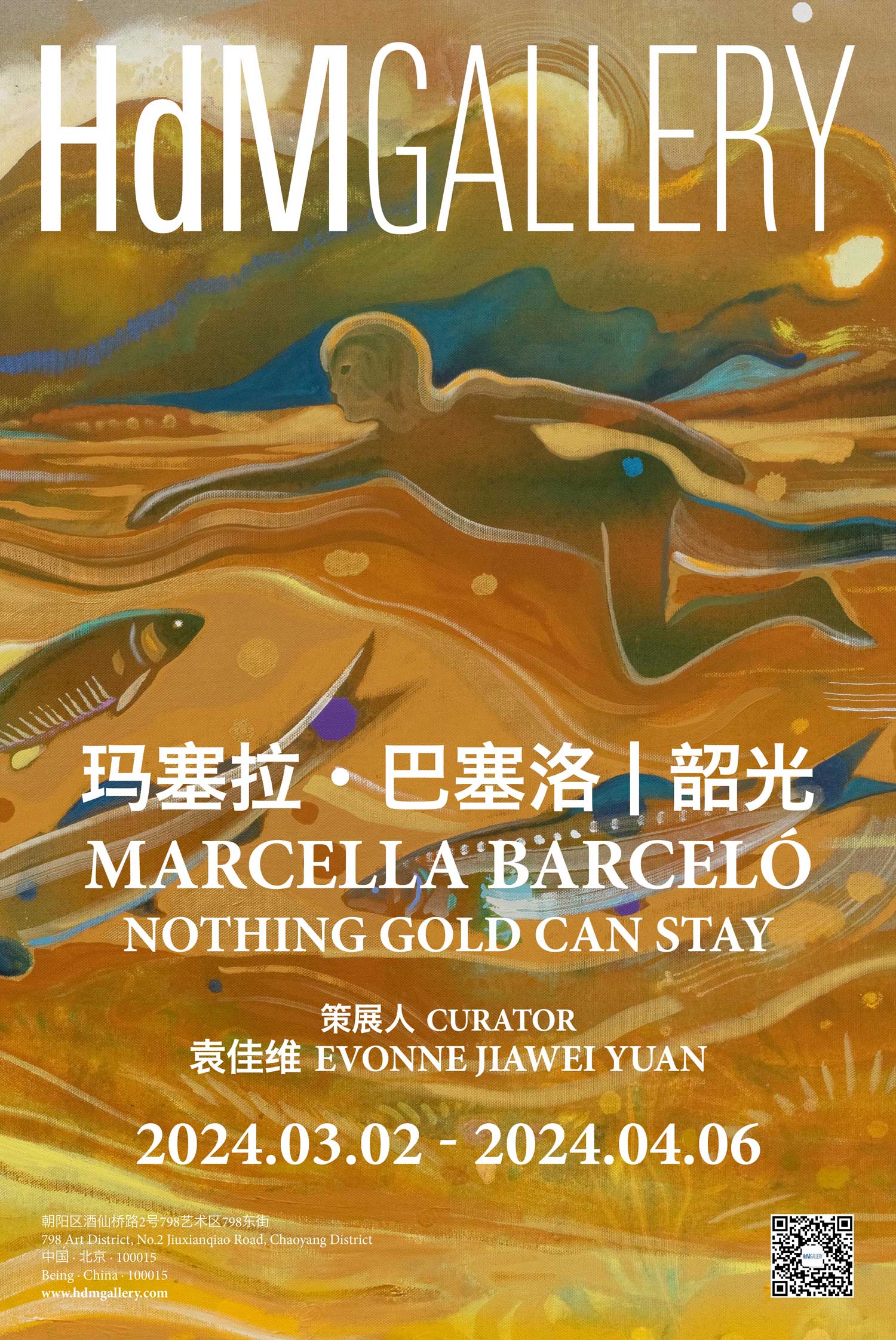展期 Period:
2024.3.2—2024.4.6
艺术家 Artist:
策展人 Curator:
地点 Venue:
新闻稿 Press Release:
HdM画廊欣然宣布将于今春举办玛塞拉·巴塞洛(生于1992年)个展,特邀袁佳维担当策划。
玛塞拉的实践主要涉及绘画与素描,她在早期生涯中就开辟了一条独具特色的经验路径。基于对在西班牙东部马略卡岛度过的部分童年的再想象与梦境化的处理,艺术家表达了一种回忆具象至己身的变化过程,同时与之配合地把自然景观深刻理解为始终流动或过渡的状态。
艺术家以罗伯特·弗罗斯特完成于1923年的短诗标题《Nothing Gold Can Stay》(常见为“美景易逝”或“黄金之物不久全”)命名本次展览,策展人将之译作“韶光”以提示其架上创作的暧昧性。从幻灭感中获得灵光,玛塞拉借用这位美国诗人对乡村生活的勾勒,反复咀嚼他对青春、美好事物以及生命最终之短暂性的沉思,籍此反映自身对周遭世界之同一性的尊重。她的画面还探索了与自然建立正确关系的构想,共生的概念是其后人文主义思想框架的核心。
巴塞洛通过回忆所及的实践与持续的观察,专注于描绘少女的(自)画像、未能驯化的动物、蔓延的火山群与原始森林等野生环境,以及她所钟意的户外活动如潜水等各种场景元素。她经常回归同一主题,并有意识地重建她的梦境即故土,证明自己对个人历史和自然作为一种再现类型的定向研究。
值得一提的是,在巴塞洛的作品中,孪生儿尤其是姐妹情谊的意象贯穿始终。相同的人物或身体轮廓的剪影作为二元性乃至多元性的标志,一方面将艺术家的自我定位置于人与自然的共生关系之中,另一方面孕育了区别、分离、又融合的生命历程,却未必局限于线性进化本身。她在画面中确定了一个非人类中心主义的位置,它的价值与其对人类的益处无关。
因此,巴塞洛的自然观不仅由充分的情感所支配,且根植于浪漫主义传统。她倾向于将自然隐喻为母亲,这个无所不能的他者孕育了她的感知,但她又会赋予自然诗意与灵性,将其视为和谐的审美范式作为引导。此次展出的作品主体在一定程度上显示了艺术家对自然的关怀姿态,并支撑其自证。这既是幻想,也是现实,更是一个可持续的乌托邦。
Marcella works primarily in painting and drawing. Centred on the reimagination and dreaming of her childhood partly spent in Majorca, Spain and paired with an attentive understanding of natural landscape as a condition of constant flux and transition, the artist has developed a distinctive experiential approach in her early career that encompasses an embodied process.
As suggested by the artist, the title of the exhibition is drawn from the short poem “Nothing Gold Can Stay” written by Robert Frost in 1923. Embracing the gift of disillusionment, Marcella appropriates Frost’s depictions of rural life to ruminate the transience of youth, beauty, and ultimately life itself as a reverence for the oneness of her immediate surroundings. She further explores the ideation of a right relationship with nature where intergrowth is thought as a frame of her post-humanist mind.
Made over prolonged periods of sustained memory and observation, Marcella focuses on scenic elements ranging from (self-)portraiture of young girls, untamed animals, wild settings like giant volcanic peaks and ancient forests, and the outdoors that she enjoys, underwater diving, for instance. Returning to the same subject quite frequently, she composes her dream(-home-)land deliberately, which reflects a precise study of her personal history and nature as a genre of representation.
Particularly worth mentioning in this vein is the imagery of twinship especially sisterhood throughout Marcella’s practice. Identical figures or silhouettes of body shape as a sign of duality or even plurality contextualize the artist’s self-positioning to the symbiotic bond between man and nature, facilitating the gradual course of differentiation, separation, and integration, but not necessarily limited to a sort of linear evolution. She locates a non-anthropocentric place in her paintings, which has value independent of its benefit to people.
In this way, Marcella’s conception of nature is not only emotionally charged but also rooted in the Romancist tradition. She tends to metaphorize nature as mother, the all-powerful other who fosters her perception of the world, meanwhile having it poeticized and spiritualized as an aesthetic paradigm of harmony. There is a sense about her body of work in which the self-entity of nature has not yet arisen but has been arising, and the artist is a certain medium of caring. It is at once fantasy, reality, and utopia of a sustainable planet.

